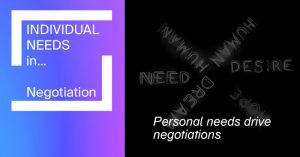ENS has worked with hundreds of skilled negotiators over many years and our experience suggests that over 80% of a negotiation outcome is achieved in the pre-negotiation phase. Well before the parties begin formal negotiating sessions, there are steps you can take to start influencing the other side.
In this article, we discuss the importance of pre-negotiation phase. Using examples from the UK–EU Brexit negotiations, we illustrate how you can use this critical phase to set up the later stages of the negotiation.
Influencing before negotiating
On 23 June 2016, Britain voted to leave the European Union. Just 6 days later, Donald Tusk, the president of the European Council, stated that there would be ‘no negotiations of any kind until the UK formally notifies its intention to withdraw’.
That seemed clear enough. But just a few seconds later he said, ‘Access to the single market requires acceptance of all 4 freedoms … there will be no single market à la carte’. Immediately after stating there would be no negotiation until the UK had made its formal withdrawal notification, he started establishing his negotiation position. The EU’s pre-negotiation phase had begun.
With his seemingly contradictory statements, what was Tusk trying to achieve? His aim was to try and influence the UK’s expectations.
Dropping an anchor
When we see a used car for sale at ‘$8,000 or nearest offer’, we may think the seller is foolish for revealing from the outset that the price is negotiable. However, they are in fact setting the agenda by establishing an initial negotiation position. By naming a price, they are giving a very clear guide to the price range in which the negotiation will happen. This is a remarkably powerful strategy that sticks in our mind and influences our expectations of what the car is worth.
This concept is known as ‘anchoring’ and it’s important for all negotiators to be aware of it. Humans have a strong and unconscious tendency to place importance on the first piece of information we hear about a particular issue or situation.
The information sinks like an ‘anchor’ into the seabed of our minds, and any information that comes later tends to be judged in relation to the original benchmark. The $8,000 car might actually be worth much less, but by anchoring a price in our mind, the seller has increased the likelihood that we will judge its value to be closer to that mark.
Setting a marker
Here’s another Brexit example. In November 2016, with the expectation of formal negotiations still months away, Michel Barnier, the EU’s chief Brexit negotiator, briefed the Financial Times. He suggested that Britain could be forced to pay up to €60 billion to exit the EU. In December, he again commented that Britain must keep paying ‘tens of billions’ annually into the EU budget until 2020.
Knowing what you now know about anchoring, what do you think Barnier was trying to achieve? That’s right. He was setting down a marker for the upcoming negotiations about the price of Brexit and seeking to influence Britain’s expectations.
He may also have been trying to divert attention away from the EU’s key negotiation objectives. If he could give the British negotiators the preconception that the main battle would be about the cost of the separation, this would make it easier for EU to achieve their objectives in other areas. Barnier may also have been trying to intimidate the British negotiators. From the EU point of view, it was crucial to drive a hard bargain with Britain to deter other member states from also leaving.
In the pre-negotiation phase of a tough negotiation, parties may be feeling antagonistic towards each other. And they may be tempted to try and land some early psychological blows. But sometimes, this can be counterproductive. A more collaborative and communicative approach may yield better results for both parties.
Key tip for negotiators
- The process of each party influencing the other starts early. The further away from formal negotiation the less aware people are that the negotiation process is operating. This makes it easier to influence them so pay particular attention in the pre-negotiation phase to make sure you identify the other party’s tactics or set in train your own.
- Use anchoring to set down markers. What you say in the pre-negotiation phase will exert a strong influence on the other party. Use it to shape their expectations about the likely outcome of the negotiation.
- Carefully consider whether a cooperative or aggressive approach is the best option in your pre-negotiation phase.
How ENS can help
ENS consultants work with clients all over the world to help them learn how to negotiate effectively in high-stakes scenarios. Understanding how to start influencing the other party by setting markers and price anchors in the pre-negotiation phase can help set you up for success.
Want to know more?
To discuss this article in more depth and explore how you can develop your negotiation capabilities, contact us on the form below.



